Open Channel with a Side Outlet CFD Simulation, ANSYS Fluent Tutorial
$140.00 Student Discount
- The problem numerically simulates Open Channel with a Side Outlet using ANSYS Fluent software.
- We design the 3-D model by the Gambit software.
- We Mesh the model by ANSYS Meshing software, and the element number equals 178093.
- We use the VOF Multi-Phase model to define two phases of air and water.
- The Free Surface Level is used to determine the water’s height in the channel.
To Order Your Project or benefit from a CFD consultation, contact our experts via email ([email protected]), online support tab, or WhatsApp at +44 7443 197273.
There are some Free Products to check our service quality.
If you want the training video in another language instead of English, ask it via [email protected] after you buy the product.
Description
Description
This simulation is about an open channel with a side outlet via ANSYS Fluent software. We perform this CFD project and investigate it by CFD analysis.
Open channel is waterways channels, or artificial waterways, for water conveyance or service water transport vehicles. They may also help with irrigation. It can be thought of as an artificial version of a river.
Nowadays, the use of canals in the industry has received much attention in applications, including air ducts and water transmissions. The shape and dimensions of the channels also largely depend on their uses.
This analysis investigates the flow inside an open channel, which has a 180-degree bend, with a side outlet.
The water enters the canal with a mass flow rate of 45Kg/s, and in the middle of the bent section, the obstacles will reduce the flow pressure and guide a portion of entered water to the side outlet for irrigation of a farm.
The geometry of the present model is drawn by Gambit software. The model is then meshed by ANSYS Meshing software. The model mesh is unstructured, and 178093 cells have been created.
Open Channel Method
This simulation uses the multi-phase model for modeling two phases of air and water. Since the phase separation boundary is completely distinct, the Volume of Fluid (VOF) model is used.
Also, since there is a certain level of water at the entrance of this canal, it is necessary to determine the free surface level. This means that water flow enters the canal up to 0.15 m of the water, with air above it.
Open Channel Conclusion
After simulation, the contours of velocity, pressure, and volume fraction of water and air are obtained. The pressure contour shows that the lower part of the channel has high pressure because it has a water flow up to a certain level.
Also, the contour of the mass fraction of air and water correctly shows that water flows in the lower level of the channel and air flows above it.
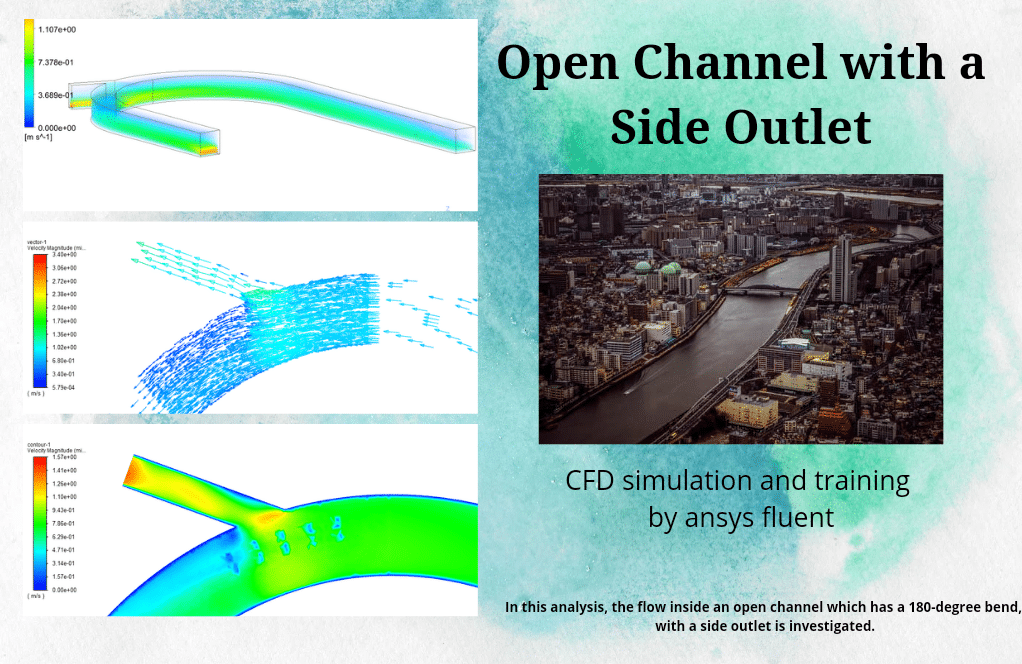
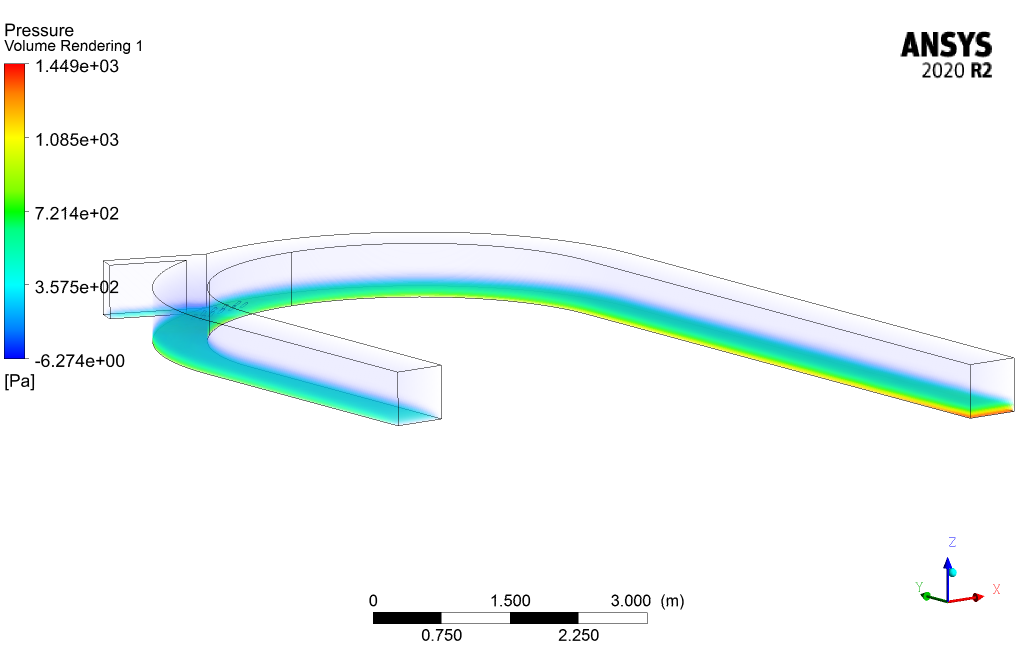

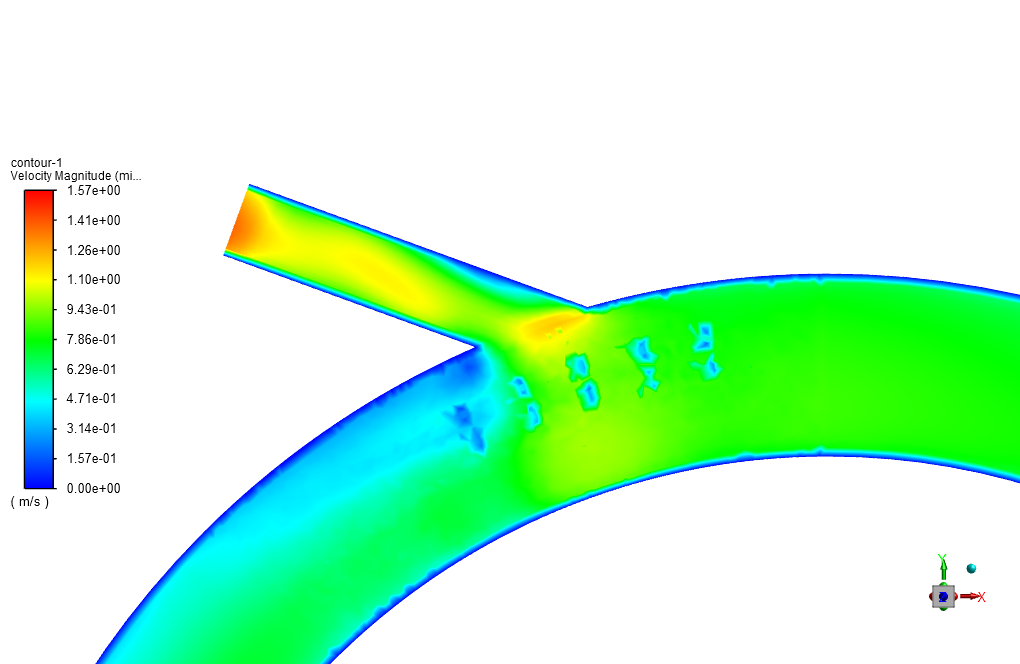
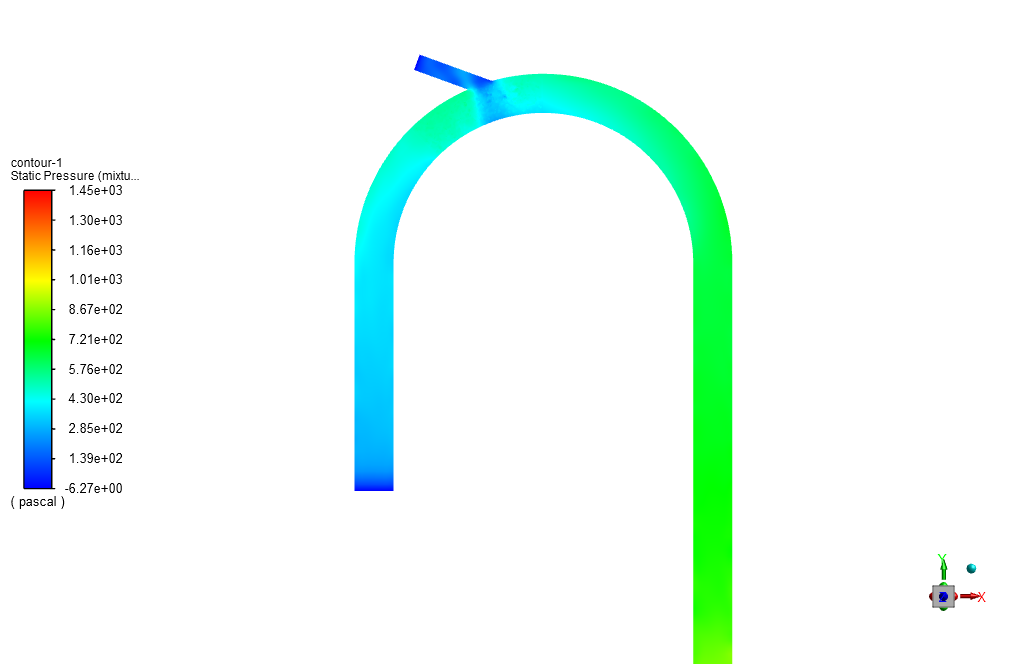
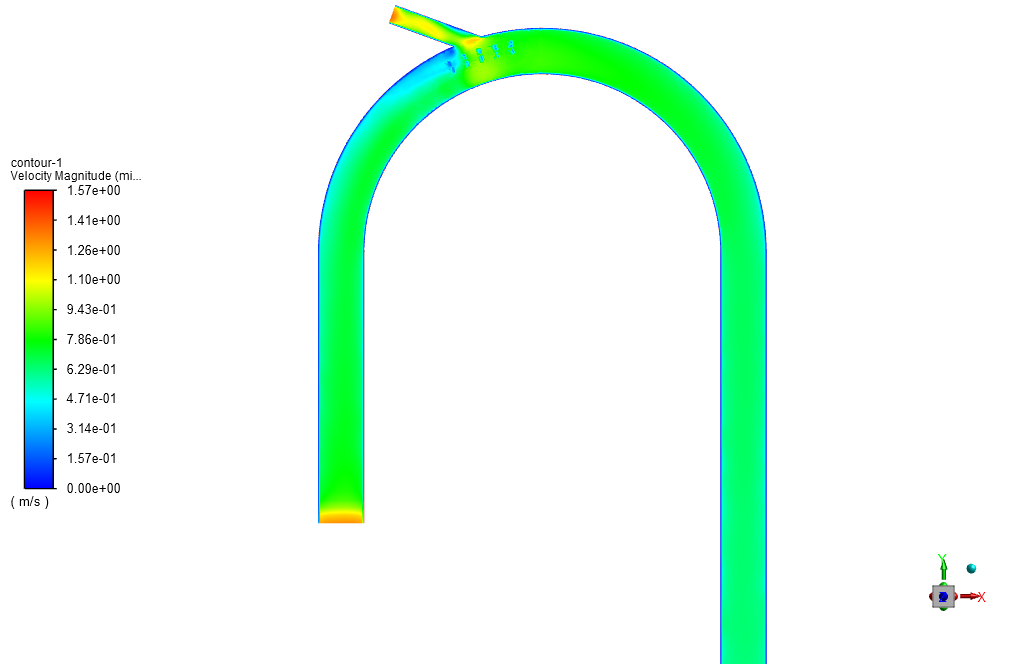
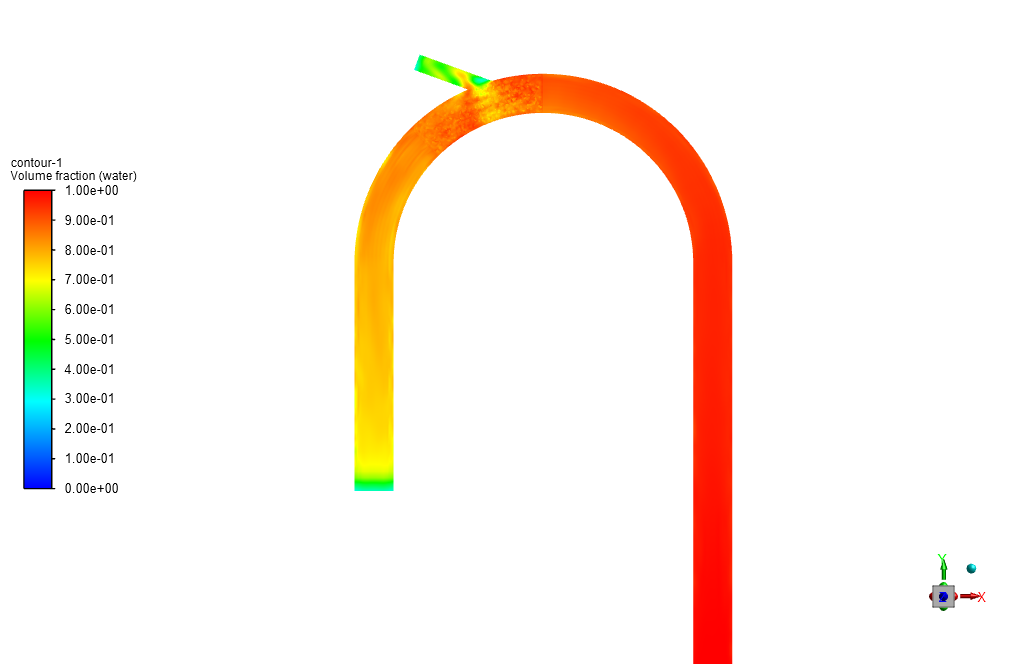
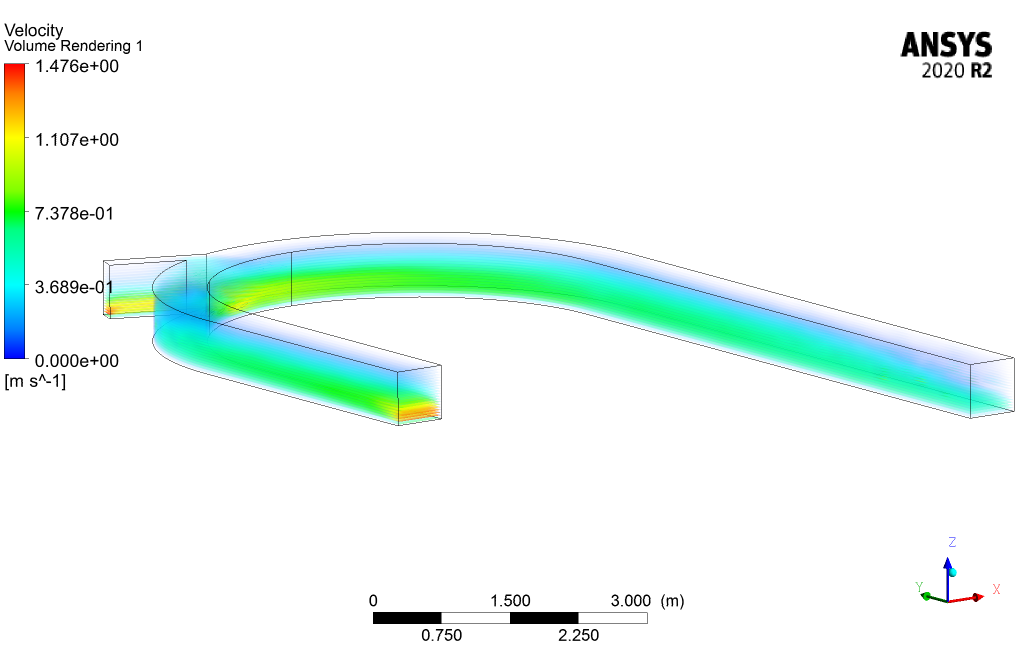
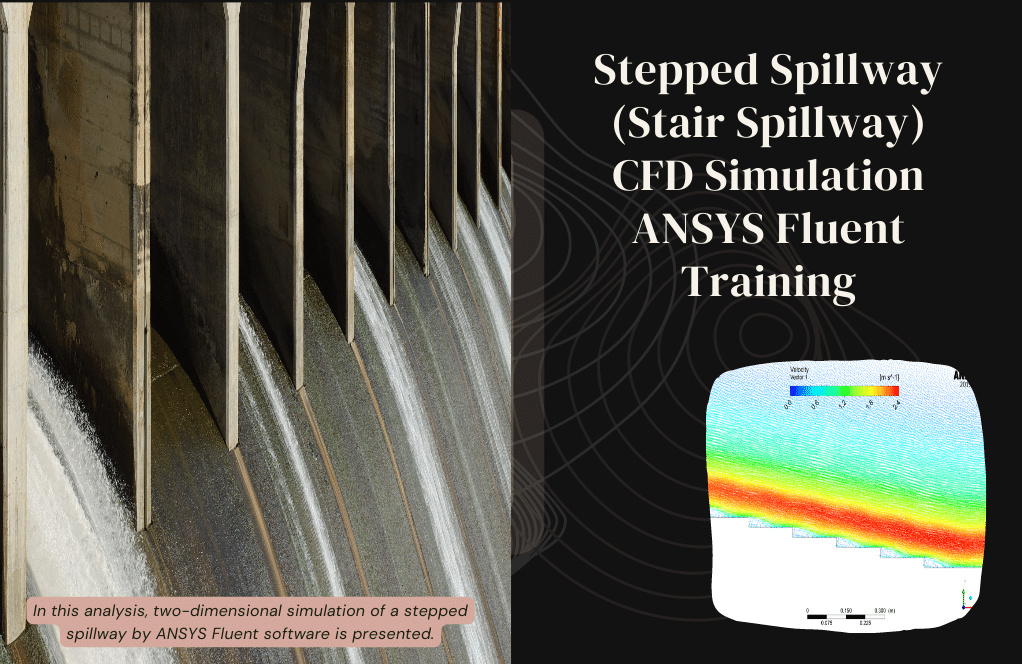
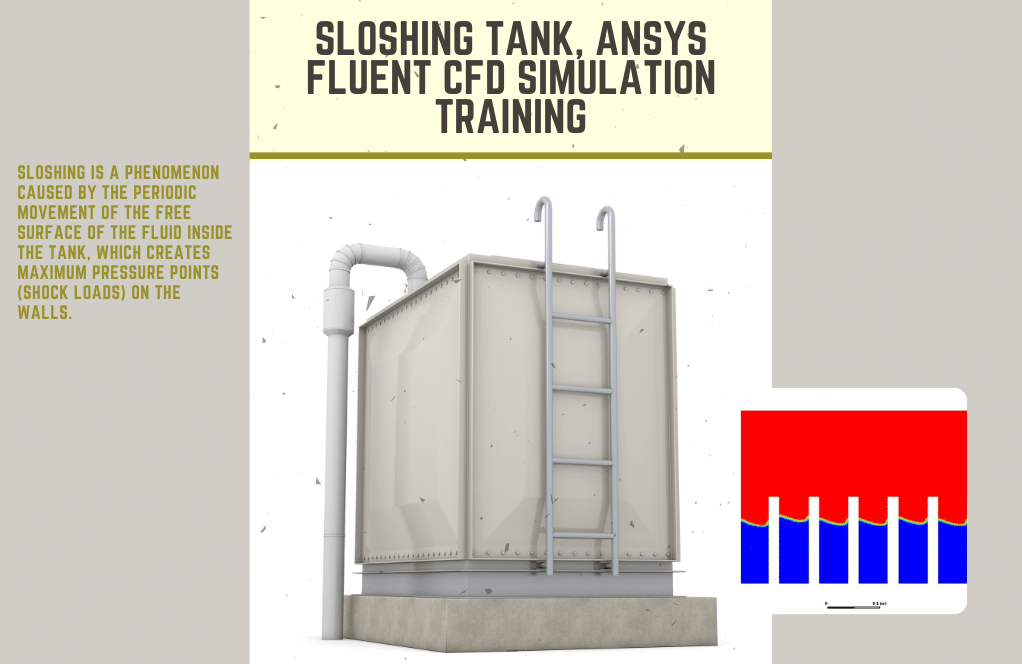
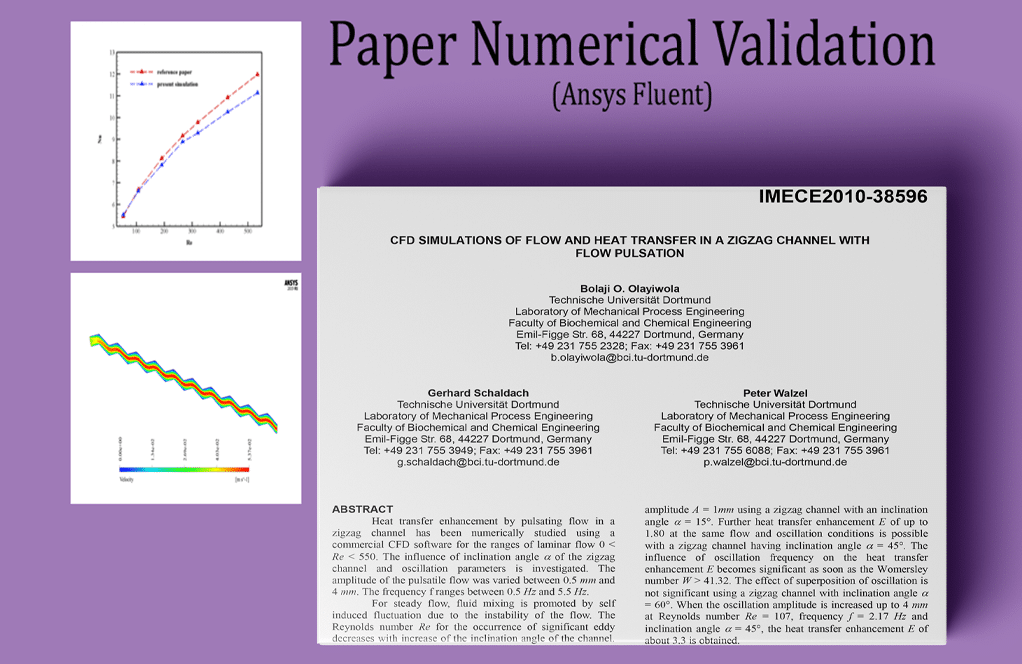
Prof. Cassidy Bergnaum I –
The tutorial seems comprehensive. I enjoyed learning how irrigation systems could benefit from simulations like this one. Great application of CFD to real-world scenarios.
MR CFD Support –
Thank you for your kind words! We’re delighted to hear that you found the open channel simulation tutorial informative and applicable. It’s always rewarding to know our tutorials are helping clients understand the potential of CFD in practical applications like irrigation systems. Your feedback is appreciated!
Sheridan Quitzon –
This tutorial was truly helpful. Seeing the fluid dynamics at play within the open channel bend and the outlet interaction was insightful. It also gave practical insights into applying CFD concepts to real-world problems such as irrigation.
MR CFD Support –
Thank you for your positive feedback! We’re delighted to hear you found our tutorial helpful and that it provided valuable insights. If you have more questions or need further assistance with similar simulations, feel free to reach out!
Kayleigh Green –
I’m impressed with how the VOF model was used to define the distinct boundary between air and water in the open channel simulation. It seems very effective for this type of CFD analysis.
MR CFD Support –
Thank you for your positive feedback! We’re glad to hear that the application of the Volume of Fluid (VOF) model in the open channel simulation was clear and effective for separating the two phases. If you have any more questions or need further clarification on any aspect of the simulation, please feel free to ask. We’re here to help!
Nathaniel Yost –
I’m especially impressed by the dynamic solution that captures the behavior of the open channel. The detailed geometry, along with an unstructured mesh, seems to provide a high-fidelity simulation. Nice work on portraying the complexity of fluid mechanics phenomena!
MR CFD Support –
Thank you for your positive feedback! We pride ourselves on delivering detailed and accurate simulations that help in understanding complex fluid mechanics phenomena. Your kind words are greatly appreciated, and we’re glad to know our efforts have made an impact.
Delilah Mann –
The tutorial was so helpful, I managed to set up my simulation just like you described it.
MR CFD Support –
We’re thrilled to hear you found our tutorial on Open Channel with a Side Outlet CFD Simulation useful and that it guided you successfully through your simulation setup. Thank you for choosing MR CFD Company’s products, and we really appreciate you sharing your positive experience!
Conrad Mosciski I –
I’m curious about the use of the obstacles in the simulation. Could you detail how they influence the flow and pressure to direct water to the side outlet for irrigation?
MR CFD Support –
In this simulation, obstacles are strategically placed in the bent section of the open channel to create localized regions of low pressure. As water flows through the channel and encounters these obstacles, the flow experiences a reduction in momentum, which creates a pressure drop around the obstacles. This pressure drop is leveraged to guide the water towards the side outlet, which is designed to draw off a portion of the water for irrigation purposes. The configuration and size of the obstacles are vital to control precisely how much water is diverted to ensure efficient water distribution without adversely affecting the main flow in the channel.